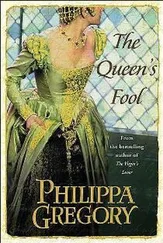Rous left us two portraits of Richard. The positive one, composed during the king’s lifetime, was also accompanied by a pen drawing, in which Richard – in full martial regalia – showed no obvious sign of deformity. After his death Rous was more specific about his appearance, remarking that Richard was small in stature, and his right shoulder higher than his left. Rous’s comment, although part of a hostile reworking, cannot simply be disregarded. But even if Richard suffered from such a condition, it did not seem to have hampered his courage on the battlefield, for despite the comparison with the Antichrist, Rous then chose to pay tribute to Richard for the way in which he fought in his last few moments at Bosworth. The compliment is all the more striking for being so reluctant. When on the battlefield, ‘he bore himself like a gallant knight, and honourably defended himself to his last breath.’
Other commentators also chose to jump ship once Henry VII’s regime was firmly established. The Italian humanist Pietro Carmeliano praised Richard In 1484 as an outstandingly pious, munificent and just ruler; two years later, after he had entered Henry’s service, Carmeliano condemned Richard no less vigorously as the villainous murderer of Henry VI and the Princes in the Tower. But a coherent Tudor view of Richard III only began to emerge later, with two highly influential works composed early in the reign of Henry VIII: an English history compiled by the Italian court historian Polydore Vergil, and Thomas More’s dramatic account of the reign of Richard III. Both had profound sway on the Shakespearean portrait.
Polydore Vergil’s treatment of Richard III is comprehensive and well-researched. He evidently consulted with many men who could remember well back into the Yorkist period, including some who had played an important part in the government of the time. He had access to a considerable body of written material, including one or more of the London chronicles brought together early in the Tudor period, but drawing on contemporary memories of the events of Richard’s rule. And because Henry VII had given his blessing to Vergil’s project, he had unrivalled access to the noblemen and bishops of the Tudor court, including those who had joined Henry In exile before his invasion of England in 1485. This gives his account of the Bosworth campaign particular value. But an underlying bias is all too apparent in his work, a clear desire to interpret events in favour of the ruling Tudor dynasty.
Under the guise of historical reasoning, Polydore Vergil in fact speculated on Richard’s psychology, explaining the occurrences of his reign through one consistent idea: that beneath outwardly correct and well-intentioned public behaviour, the king was privately motivated by deceit and dishonesty. As soon as he heard of his brother Edward IV’s death, Vergil related that Richard ‘began to be kindled with an ardent desire of sovereignty’, and straight away resolved to seize the throne. He determined to accomplish this ‘by subtlety and sleight’, and came to power ‘without the assent of the commonality’ – in other words, he was a usurper. Vergil concluded: Richard ‘thought of nothing but tyranny and cruelty’ and at the finish, it was God who gave victory to Henry VII.
Polydore Vergil would almost certainly have been aware that Richard did in fact have a right to the throne, the Titulus Regius, which was formally set out in the parliament of 1484, but as Henry VII had ordered that all copies of it be destroyed, Vergil deemed it more prudent to ignore its existence rather than discuss its merits. His approach was sophisticated, invoking the deceit he believed brought Richard to the throne and kept him there as an explanation for the good government Rous and Carmeliano had first praised during the king’s lifetime. For Polydore Vergil, Richard’s actions were not prompted by any genuine concern for his subjects’ well-being, but rather by guilt and fear: ‘He began to give the countenance and show of a good man,’ Vergil remarked, ‘whereby he might be seen [to be] more righteous, and to procure himself support, he began many good works, as well public as private.’
An insinuation of inner turmoil was then employed in a discussion of Richard’s appearance. Polydore Vergil first cited some mannerisms, probably remembered by those who had been about the king: ‘While he was thinking of any matter, he did continually bite his nether lip… also he was wont to be ever with his right hand pulling out of the sheath to the midst, and putting in again, the dagger which he always did wear.’ He repeated the description made by Rous, that ‘he was short of stature, the one shoulder being higher than the other’, before interlacing his own judgement, ‘deformed of body… a short and sour countenance, which seemed to savour of mischief, and utter craft and deceit… as though that cruel nature of his did so rage against itself in that little carcass’. Vergil then damned Richard with faint praise: ‘Truly he had a sharp wit, provident and subtle,’ he conceded, before adding, ‘apt both to counterfeit and deceive.’ And yet he also felt compelled to praise Richard’s final moments at Bosworth: ‘His courage was high and fierce, which failed him not in the very death, which he rather yielded to take with the sword than by foul flight to prolong his life.’
Richard’s courage was fleetingly referred to in Sir Thomas More’s History of King Richard III, though his unfinished account did not include Richard’s last battle: ‘No mean captain was he in war,’ More remarked, ‘to which his disposition was better suited than peace. Sundry victories he had, and sometimes overthrows, but never for any lack in his own person, either of hardiness or generalship.’ But this praise was a short interlude in an otherwise unremittingly hostile account.
Sir Thomas More may have been motivated to write his study of Richard as a treatise against tyranny. It was deliberately dramatic, sometimes inaccurate in its historical detail, and always ready to embellish its narrative, sometimes with speeches that were clearly invented. Although More may have consulted some written histories, including a manuscript version of Polydore Vergil’s account, and had access to informants who had witnessed the key events he described, including Archbishop John Morton, in whose household More grew up, Richard’s role was cast from the very beginning as that of grand villain. In pursuit of this, More gave the first full account of how the king might actually have dispatched his nephews, the Princes in the Tower, including the detail that they were smothered in their beds by pillows. New themes were introduced too, hammered into historical orthodoxy by the chroniclers who followed him. Richard was now plotting to take the throne even before his brother’s death, with More being the first authority to suggest that Richard was behind the death of his brother George, Duke of Clarence.
In his history, More refashioned the mannerism in which Richard absent-mindedly toyed with his dagger into something altogether more menacing: ‘His eyes whirled about, his body secretly armoured, his hand ever on his dagger, his countenance and manner was like one always ready to strike back.’ He provided a compelling portrait, with Richard now the embodiment of evil, by cleverly heightening dramatic effect. This is seen in his embellishment of Polydore Vergil’s account of the council meeting of 13 June 1483, a key moment in Richard’s seizure of the throne.
The solemn gathering of the English council might seem a staid affair, but More gave us a roller-coaster ride. In his version of events, Richard arrived late for this important meeting in apparent good humour, innocently asking Bishop Morton for a dish of strawberries from his garden, and then briefly left the room. But he returned with a change of mood that astonished those assembled there, suddenly rolling up his sleeve to display a withered arm, accusing the unlikely partnership of Edward IV’s widowed queen and former mistress of being witches, responsible for this affliction, and then charging the chamberlain, William, Lord Hastings, of plotting against him. More related that Richard ordered Hastings’s immediate execution, swearing that he would not dine until his head had been struck off.
Читать дальше












